This attempt uses the UpdateLayeredWindow API : http://msdn.microsoft.com/en-us/library/ms997507.aspx#layerwin_topic2a
I inspired my implementation with this one from Corylulu : https://stackoverflow.com/a/8809657/1812199
The two bitmaps are created on the fly but you can load them from the file system or whatever.
The overlay window currently spreads over the whole primary screen but you can also choose to set the location and size of the form to whatever your need is (e.g. on top of another form).
I implemented a very basic animation for the two bitmaps but it is up to you to be more creative than me :)
using System;
using System.Drawing;
using System.Drawing.Drawing2D;
using System.Drawing.Imaging;
using System.Runtime.InteropServices;
using System.Windows.Forms;
namespace StackOverflow25400312
{
static class Program
{
[STAThread]
static void Main()
{
Application.EnableVisualStyles();
Application.SetCompatibleTextRenderingDefault(false);
var bounds = Screen.PrimaryScreen.Bounds;
var imagesSize = new Size(bounds.Width * 2 / 3, bounds.Height);
var left = LoadLeftDoorTransparentPng(imagesSize);
var right = LoadRightDoorTransparentPng(imagesSize);
// Create a form with same dimension as the screen.
var form = new OverlayForm(left, right, bounds);
Application.Run(form);
}
private static Image GenerateImage(GraphicsPath path, Size sz)
{
var bitmap = new Bitmap(sz.Width, sz.Height, PixelFormat.Format32bppArgb);
var graphics = Graphics.FromImage(bitmap);
graphics.Clear(Color.Transparent);
graphics.FillPath(Brushes.Red, path);
return bitmap;
}
private static Image LoadRightDoorTransparentPng(Size sz)
{
int w = sz.Width;
int h = sz.Height;
var path = new GraphicsPath();
path.AddLines(new[]
{
new Point(w / 2, 0),
new Point(w, 0),
new Point(w, h),
new Point(w / 2, h),
new Point(0, h / 2),
});
// I will generate it by code but you should use Bitmap.FromFile(...)
return GenerateImage(path, sz);
}
private static Image LoadLeftDoorTransparentPng(Size sz)
{
int w = sz.Width;
int h = sz.Height;
var path = new GraphicsPath();
path.AddLines(new[]
{
new Point(0, 0),
new Point(w, 0),
new Point(w / 2, h / 2),
new Point(w, h),
new Point(0, h),
});
// I will generate it by code but you should use Bitmap.FromFile(...)
return GenerateImage(path, sz);
}
}
public class OverlayForm : Form
{
public const int WS_EX_NOACTIVATE = 0x08000000;
public const int WS_EX_TOOLWINDOW = 0x00000080;
public const int WS_EX_TOPMOST = 0x00000008;
public const int WS_EX_LAYERED = 0x00080000;
public const int WS_EX_TRANSPARENT = 0x00000020;
[DllImport("gdi32.dll")]
public static extern bool DeleteDC(IntPtr hdc);
[DllImport("user32.dll", SetLastError = true)]
public static extern IntPtr GetDC(IntPtr hWnd);
[DllImport("gdi32.dll", SetLastError = true)]
public static extern IntPtr CreateCompatibleDC(IntPtr hdc);
[DllImport("gdi32.dll", ExactSpelling = true, PreserveSig = true, SetLastError = true)]
public static extern IntPtr SelectObject(IntPtr hdc, IntPtr hgdiobj);
[DllImport("user32.dll")]
public static extern bool ReleaseDC(IntPtr hWnd, IntPtr hDC);
[DllImport("gdi32.dll")]
public static extern bool DeleteObject(IntPtr hObject);
[DllImport("user32.dll", ExactSpelling = true, SetLastError = true)]
public static extern bool UpdateLayeredWindow(IntPtr hwnd, IntPtr hdcDst,
ref POINT pptDst, ref SIZE psize, IntPtr hdcSrc, ref POINT pptSrc, uint crKey,
[In] ref BLENDFUNCTION pblend, uint dwFlags);
public const int ULW_ALPHA = 2;
[StructLayout(LayoutKind.Sequential)]
public struct SIZE
{
public int cx;
public int cy;
public SIZE(int cx, int cy)
{
this.cx = cx;
this.cy = cy;
}
}
[StructLayout(LayoutKind.Sequential)]
public struct POINT
{
public int X;
public int Y;
public POINT(int x, int y)
{
this.X = x;
this.Y = y;
}
public POINT(System.Drawing.Point pt) : this(pt.X, pt.Y) { }
public static implicit operator System.Drawing.Point(POINT p)
{
return new System.Drawing.Point(p.X, p.Y);
}
public static implicit operator POINT(System.Drawing.Point p)
{
return new POINT(p.X, p.Y);
}
}
[StructLayout(LayoutKind.Sequential)]
public struct BLENDFUNCTION
{
public byte BlendOp;
public byte BlendFlags;
public byte SourceConstantAlpha;
public byte AlphaFormat;
public BLENDFUNCTION(byte op, byte flags, byte alpha, byte format)
{
BlendOp = op;
BlendFlags = flags;
SourceConstantAlpha = alpha;
AlphaFormat = format;
}
}
public const int AC_SRC_OVER = 0x00;
public const int AC_SRC_ALPHA = 0x01;
private readonly Image _left;
private readonly Image _right;
private readonly Bitmap _backBuffer;
private readonly Timer _timer;
private int _offset;
public OverlayForm(Image left, Image right, Rectangle bounds)
{
_left = left;
_right = right;
_backBuffer = new Bitmap(bounds.Width, bounds.Height, PixelFormat.Format32bppArgb);
_timer = new Timer();
_offset = 0;
Bounds = bounds;
FormBorderStyle = FormBorderStyle.None;
StartPosition = FormStartPosition.Manual;
ShowInTaskbar = false;
}
protected override bool ShowWithoutActivation
{
get { return true; }
}
protected override CreateParams CreateParams
{
get
{
CreateParams cp = base.CreateParams;
cp.ExStyle |= WS_EX_LAYERED; // This form has to have the WS_EX_LAYERED extended style
cp.ExStyle |= WS_EX_TRANSPARENT; // Click through.
cp.ExStyle |= WS_EX_NOACTIVATE | WS_EX_TOOLWINDOW | WS_EX_TOPMOST;
return cp;
}
}
protected override void OnLoad(EventArgs e)
{
base.OnLoad(e);
_timer.Interval = 16;
_timer.Tick += _timer_Tick;
_timer.Start();
}
private void UpdateLayeredWindow()
{
using (Graphics g = Graphics.FromImage(_backBuffer))
{
g.Clear(Color.Transparent);
g.DrawImage(_left, 0 - _offset, 0);
g.DrawImage(_right, Width - _right.Width + _offset, 0);
SetBitmap(_backBuffer);
}
}
private void SetBitmap(Bitmap bitmap)
{
// 1. Create a compatible DC with screen;
// 2. Select the bitmap with 32bpp with alpha-channel in the compatible DC;
// 3. Call the UpdateLayeredWindow.
IntPtr screenDc = GetDC(IntPtr.Zero);
IntPtr memDc = CreateCompatibleDC(screenDc);
IntPtr hBitmap = IntPtr.Zero;
IntPtr oldBitmap = IntPtr.Zero;
try
{
hBitmap = bitmap.GetHbitmap(Color.FromArgb(0)); // grab a GDI handle from this GDI+ bitmap
oldBitmap = SelectObject(memDc, hBitmap);
SIZE size = new SIZE(bitmap.Width, bitmap.Height);
POINT pointSource = new POINT(0, 0);
POINT topPos = new POINT(Left, Top);
BLENDFUNCTION blend = new BLENDFUNCTION();
blend.BlendOp = AC_SRC_OVER;
blend.BlendFlags = 0;
blend.SourceConstantAlpha = 255;
blend.AlphaFormat = AC_SRC_ALPHA;
bool fail = UpdateLayeredWindow(this.Handle, screenDc, ref topPos, ref size, memDc, ref pointSource, 0, ref blend, ULW_ALPHA);
}
finally
{
ReleaseDC(IntPtr.Zero, screenDc);
if (hBitmap != IntPtr.Zero)
{
SelectObject(memDc, oldBitmap);
DeleteObject(hBitmap);
}
DeleteDC(memDc);
}
}
void _timer_Tick(object sender, EventArgs e)
{
int distance = _left.Width - _offset;
// Is animation done?
if (distance == 0)
{
_timer.Stop();
Close();
return;
}
// Step forward.
// You can replace with any easing function of your choice,
// but this one works well usually.
int step = distance / 9;
// Help it a little when the animation is about to end.
if (step == 0)
step = distance;
_offset += step;
UpdateLayeredWindow();
}
protected override void Dispose(bool disposing)
{
base.Dispose(disposing);
if (disposing)
{
_left.Dispose();
_right.Dispose();
_backBuffer.Dispose();
_timer.Dispose();
}
}
}
}
